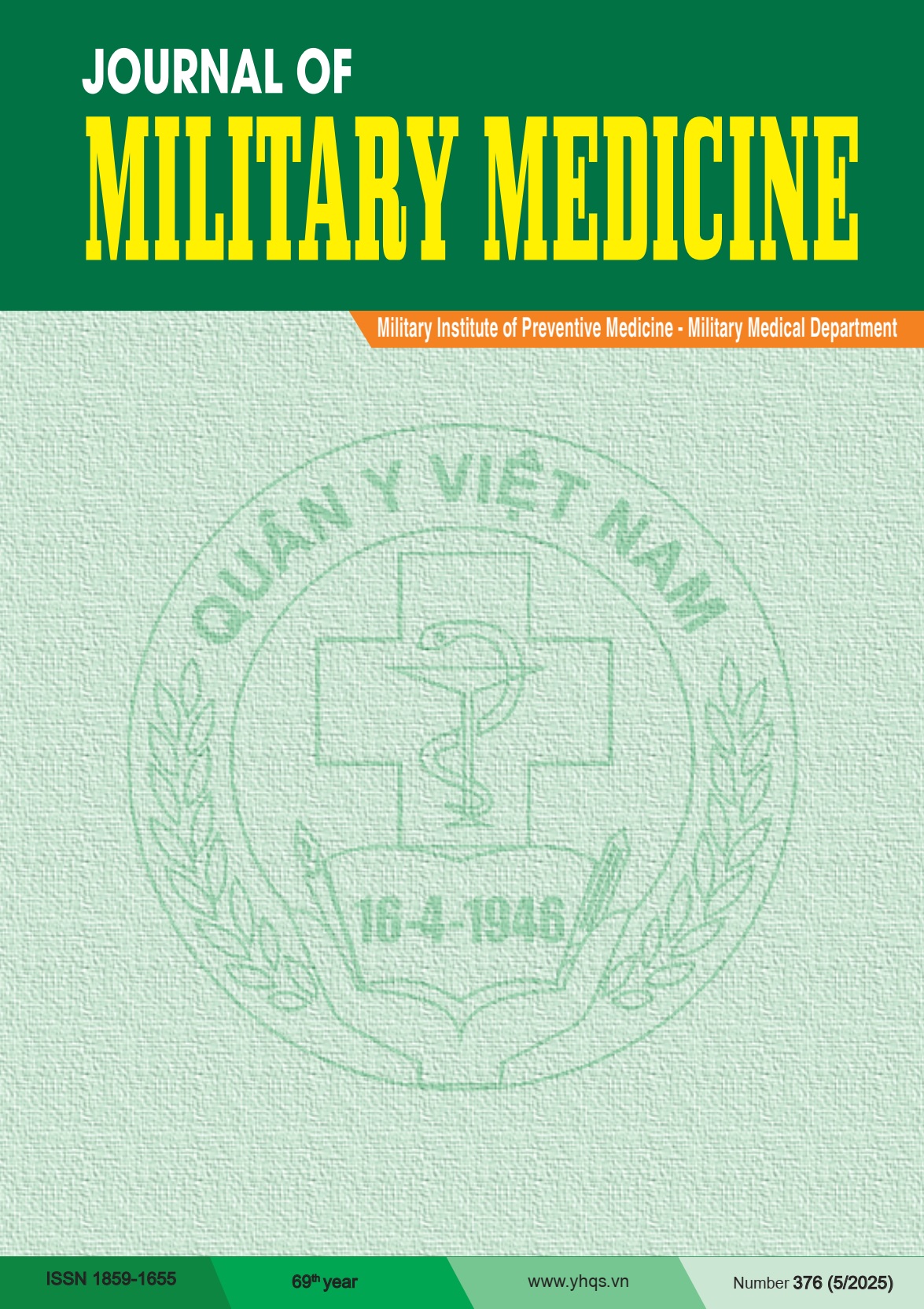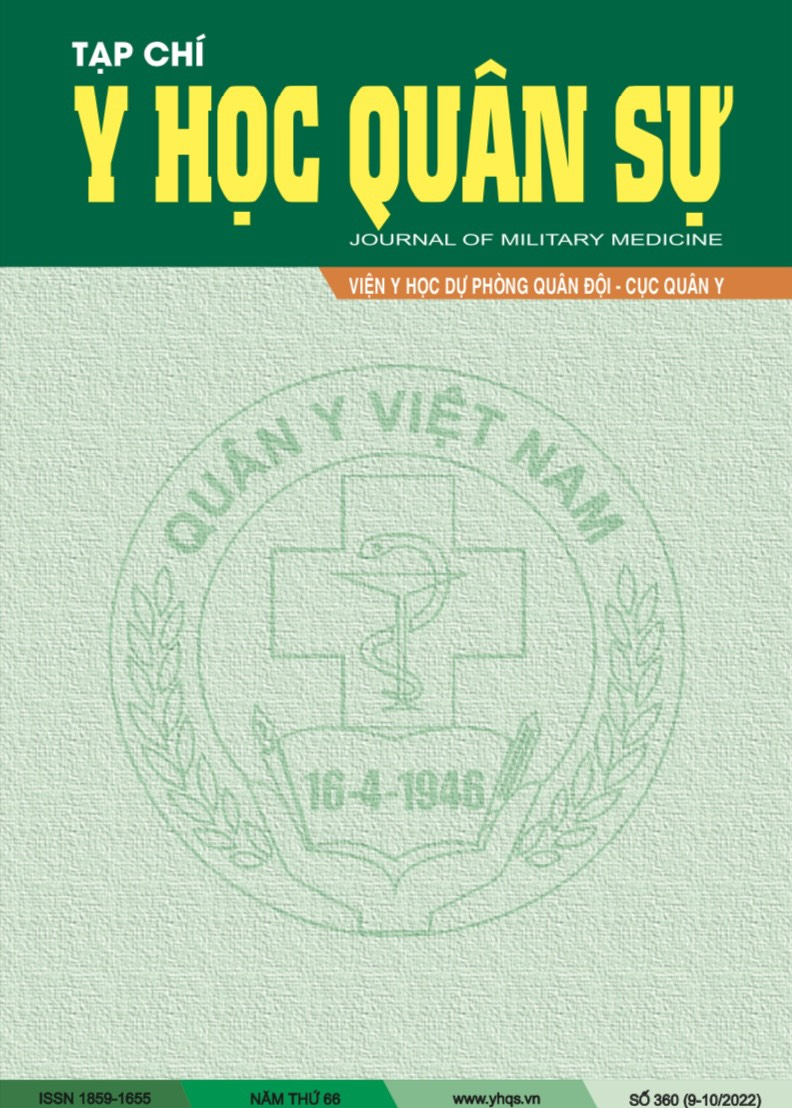RESEARCH ON THE PRODUCTION OF MRNA ENCODING SLEEPING BEAUTY TRANSPOSASE IN CAR-T CELL ENGINEERING
DOI:
https://doi.org/10.59459/1859-1655/JMM.606Từ khóa:
mRNA, Sleeping Beauty transposase, plasmid pSB100XTóm tắt
Objectives: To produce mRNA Encoding Sleeping Beauty Transposase from the DNA Template Plasmid pSB100X.
Subjects and methods: The gene encoding the Sleeping Beauty (SB) transposase protein was amplified from the DNA template plasmid pSB100X using PCR. The PCR product was then directly purified using the QIAquick PCR Purification Kit (Qiagen). In vitro transcription of mRNA was performed using T7 polymerase (New England Biolabs) with optimized incubation times of 2 hours, 6 hours, and 15 hours, and varying enzyme concentrations of 10 U, 30 U, and 100 U to determine optimal conditions. The final mRNA product was purified and subjected to Sanger sequencing at Macrogen (Seoul, South Korea).
Results: In vitro transcription for 2 hours produced a significantly higher yield of mRNA encoding the SB100X protein compared to reactions conducted for 30 minutes or 1 hour (p < 0.05). The resulting mRNA appeared as a distinct, specific band corresponding to an approximate size of 1,200 bp. The optimal amount of T7 polymerase for each transcription reaction was determined to be 30 U. After purification, the transcribed mRNA was subjected to Sanger sequencing at Macrogen (Seoul, South Korea), yielding a specific band of approximately 1,200 bp with a sequence that was completely accurate.
Conclusion: mRNA encoding the SB transposase was successfully produced with high purity and correct sequence, using 30 U of enzyme after 15 hours of in vitro transcription.
Tài liệu tham khảo
1. June C.H, Sadelain M (2018), “Chimeric antigen receptor therapy”, New England Journal of Medicine; 379 (1): 64-73.
2. Chavez J.C, Bachmeier C, Kharfan-Dabaja M.A (2019), “CAR T-cell therapy for B-cell lymphomas: clinical trial results of available products”, Therapeutic advances in hematology; 10: 2040620719841581.
3. Mullard A (2017), “FDA approves first CAR T therapy”, Nature reviews Drug discovery;16 (10): 669-70.
4. Huang X, Guo H, Kang J, et al (2008), “Sleeping Beauty transposon-mediated engineering of human primary T cells for therapy of CD19+ lymphoid malignancies”, Molecular Therapy; 16 (3): 580-9.
5. Monjezi R, Miskey C, Gogishvili T, et al (2017), “Enhanced CAR T-cell engineering using non-viral Sleeping Beauty transposition from minicircle vectors”, Leukemia; 31 (1): 186-94.
6. Mátés L, Chuah M.K, Belay E, et al (2009), “Molecular evolution of a novel hyperactive Sleeping Beauty transposase enables robust stable gene transfer in vertebrates”, Nature genetics; 41 (6): 753-61.
7. Jin Z, Maiti S, Huls H, et al (2011), “The hyperactive Sleeping Beauty transposase SB100X improves the genetic modification of T cells to express a chimeric antigen receptor”, Gene therapy;18 (9): 849-56.
8. Yang X, Ma C (2016), “In Vitro Transcription Assays and Their Application in Drug Discovery”, Journal of visualized experiments : JoVE; (115): 54256.
9. Samnuan K, Blakney A.K, McKay P.F, et al (2021), “Design-of-Experiments In Vitro Transcription Yield Optimization of Self-Amplifying RNA”, bioRxiv: 2021.01.08. 425833.
10. Wilber A, Frandsen J.L, Geurts J.L, et al (2006), “RNA as a source of transposase for Sleeping Beauty-mediated gene insertion and expression in somatic cells and tissues”, Molecular Therapy; 13 (3): 625-30.
Tải xuống
Đã Xuất bản
Cách trích dẫn
Số
Chuyên mục
Ngày xuất bản 21-05-2025



